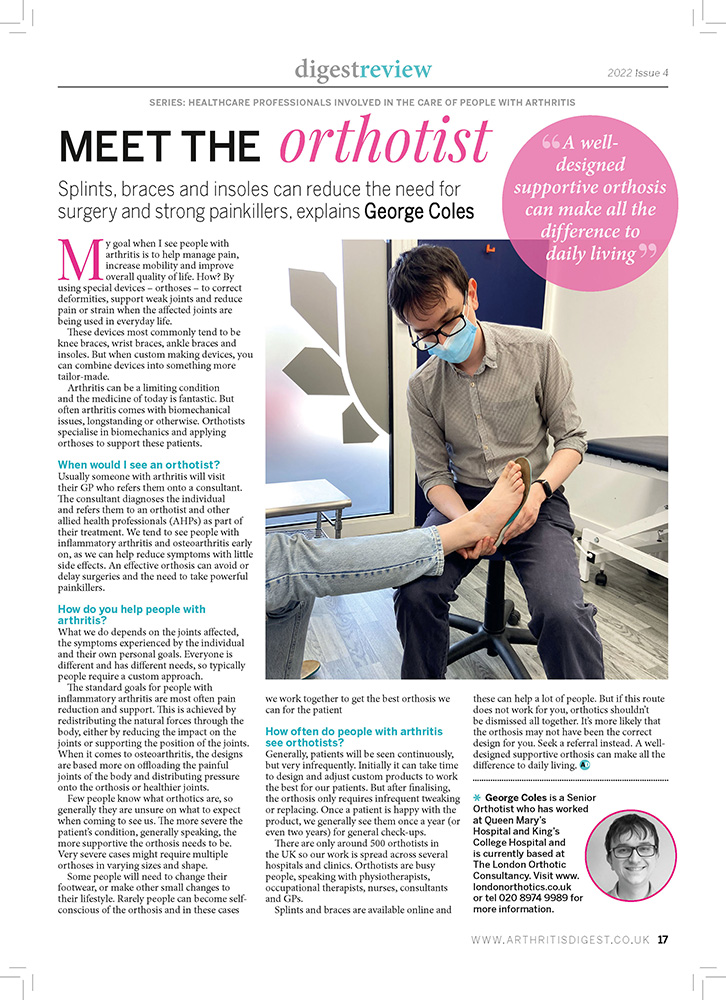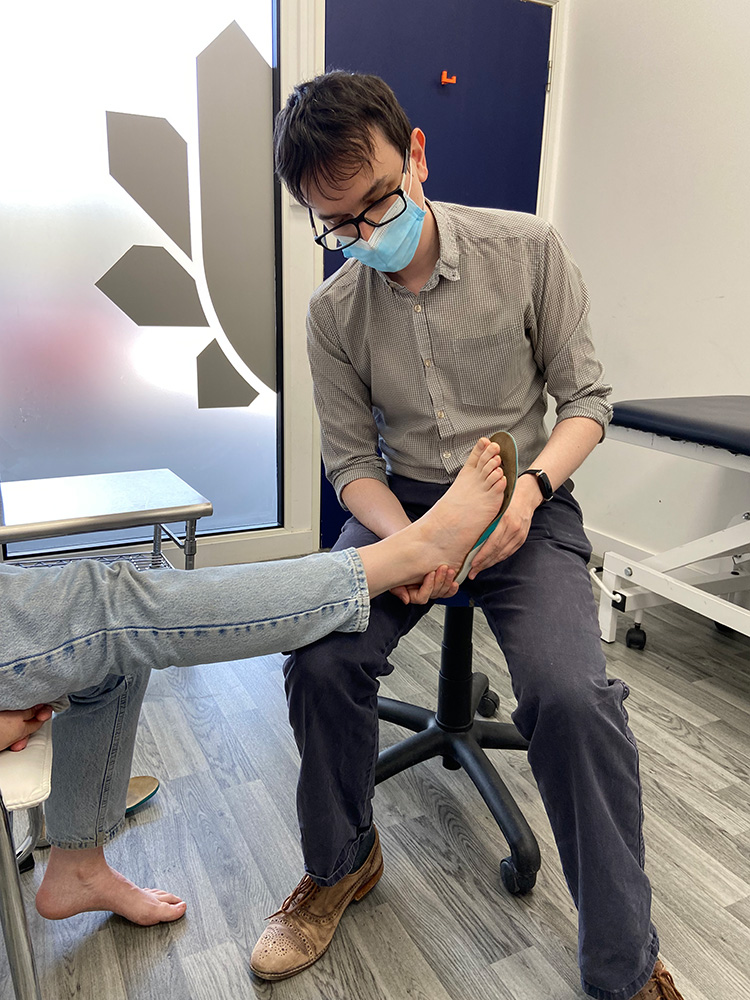
12 July 2022
Featured Orthotist in Arthritis Digest:
My goal when I see people with arthritis is to help manage pain, increase mobility and improve the overall quality of life. How? By using special devices – orthoses – to correct deformities, support weak joints and reduce pain or strain when the affected joints are being used in everyday life.
These devices most commonly tend to be knee braces, wrist braces, ankle braces and insoles. But when custom-making devices, you can combine devices into something more tailor-made
Arthritis can be a limiting condition and the medicine of today is fantastic. But often arthritis comes with biomechanical issues, longstanding or otherwise. Orthotists specialise in biomechanics and applying orthoses to support these patients.
When would I see an orthotist?
Usually, someone with arthritis will visit their GP who refers them to a consultant. The consultant diagnoses the individual and refers them to an orthotist and other allied health professionals (AHPs) as part of their treatment. We tend to see people with inflammatory arthritis and osteoarthritis early on, as we can help reduce symptoms with few side effects. An effective orthosis can avoid or delay surgeries and the need to take powerful painkillers.
How do you help people with arthritis?
What we do depends on the joints affected, the symptoms experienced by the individual and their own personal goals. Everyone is different and has different needs, so typically people require a custom approach.
The standard goals for people with inflammatory arthritis are most often pain reduction and support. This is achieved by redistributing the natural forces through the body, either by reducing the impact on the joints or supporting the position of the joints. When it comes to osteoarthritis, the designs are based more on offloading the painful joints of the body and distributing pressure onto the orthosis or healthier joints.
Few people know what orthotics are, so generally, they are unsure of what to expect when coming to see us. The more severe the patient’s condition, generally speaking, the more supportive the orthoses need to be. Very severe cases might require multiple orthoses of varying sizes and shapes.
Some people will need to change their footwear or other small changes to their lifestyle. Rarely people can become self-conscious of the orthosis and in these cases, we work together to get the best orthoses we can for the patient.
How often do people with arthritis see orthotists?
Generally, patients will be seen continuously, but very infrequently. Initially, it can take time to design and adjust custom products to work the best for our patients. But after finalising, the orthosis only requires infrequent tweaking or replacing. Once a patient is happy with the product, we generally see them once a year (or even two years) for general check-ups.
There are only around 500 orthotists in the UK so our work is spread across several hospitals and clinics. Orthotists are busy people, speaking with physiotherapists, occupational therapists, nurses, consultants and GPs.
Splints and braces are available online and these can help a lot of people. But if this route does not work for you, orthotics shouldn’t be dismissed altogether. It’s more likely that the orthosis may not have been the correct design for you. Seek a referral instead. A well-designed supportive orthosis can make all the difference to daily living.

George Coles fitting insoles at LOC Kingston
George Coles is a Senior Orthotist who qualified in Prosthetics and Orthotics from Salford University. George has worked at Queen Mary’s Hospital and King’s College Hospital and is currently based at The London Orthotic Consultancy.
If you or somebody you know has arthritis and would like more information on how orthotics can help, please contact us via email or call. We're happy to offer you a free initial video consultation.
LOC’s clinic is based in the University of Salford’s Podiatry Department and provides treatments for orthotics, scoliosis, pectus deformities, positional plagiocephaly and club foot.
It is also the base for LOC’s northern OSKAR clinic which is run by Sam Walmsley, clinical director of LOC, in conjunction with Elaine Owen MBE MSc SRP MCSP.
Clothing worn is dependent on which clinic you are attending. You will be sent a letter detailing what clothing to wear along with all other details prior to any appointment at the clinic.